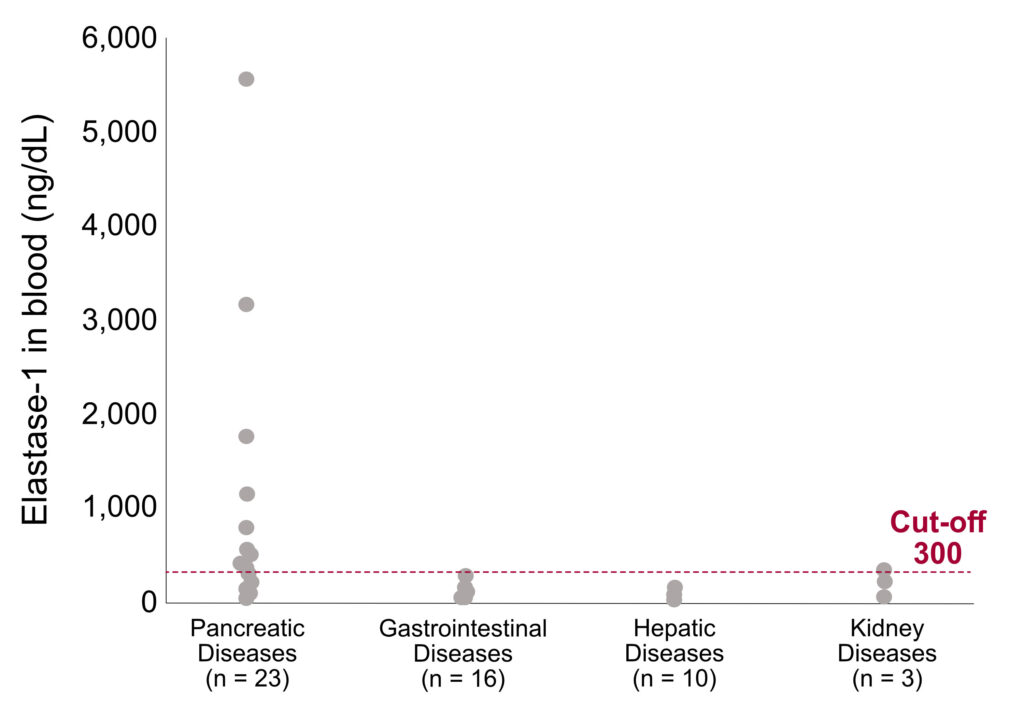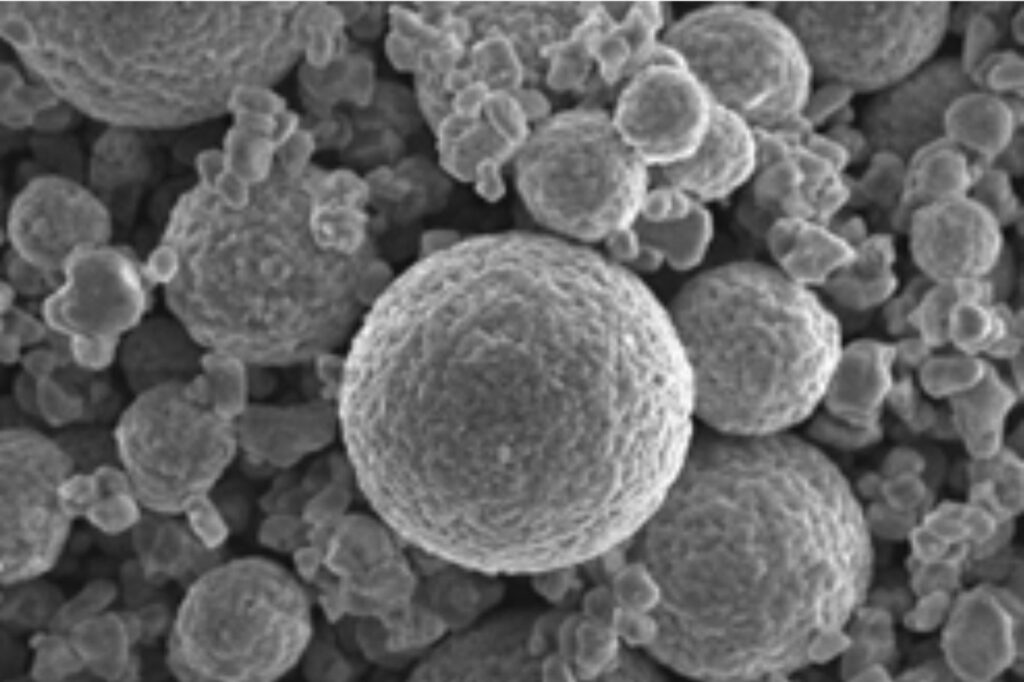Elastase-1 Latex-Enhance Immunoturbidimetry Assay
Specific pancreatic enzyme marker for early detection of pancreatic cancer.
Enables sensitive measurement of Elastase-1 levels in serum and plasma using latex-enhanced immunoturbidimetry.
Reliable Diagnostic Marker for Pancreatic Function and Cancer Screening
Elastase-1 (IRE1) is a proteolytic enzyme specific to the pancreas, released into the bloodstream due to pancreatic duct obstruction, pancreatitis, or pancreatic cancer. Elevated blood levels of Elastase-1 are clinically correlated with early-stage pancreatic cancer, making it a valuable biomarker for diagnostic screening and disease monitoring.
The IRE-1 reagent can be applied to a clinical chemistry analyzer using latex-enhanced immunoturbidimetry, where the enzyme reacts with latex coated with anti-human Elastase-1 monoclonal antibodies to form aggregates measured optically.
With excellent precision, a wide measuring range (80–4,000 ng/dL), and stability for up to 12 months at 2–10 °C, the reagent delivers accurate and reproducible results for both serum and plasma samples.
High levels of Elastase-1 are observed in pancreatic cancer and pancreatitis, while low levels indicate severely impaired pancreatic function.
NAGASE provides this unique reagent through its cooperation partner, ensuring high-quality diagnostics and reliable global supply for clinical laboratories.
Applications
Elastase-1 (IRE1) is mainly used for the clinical detection and monitoring of pancreatic diseases.
- Early-stage pancreatic cancer diagnosis and screening
- Detection of pancreatitis and pancreatic duct obstruction
- Monitoring pancreatic function after surgery or therapy
- Assessment of digestive enzyme activity in serum and plasma
- Integration into automated clinical chemistry analyzers
Features
Elastase-1 reagent provides accurate, reproducible, and pancreas-specific diagnostic performance using latex-enhanced immunoturbidimetry.
- High diagnostic specificity – Pancreas-exclusive proteolytic enzyme
- Early detection capability for pancreatic cancer and pancreatitis
- Wide measuring range (80–4,000 ng/dL) with strong within-run precision
- Stable performance – 12-month shelf life at 2–10 °C
- Automated compatibility with major clinical analyzers (e.g., Hitachi 7180)
Assay Specification
| Characteristic | Details |
|---|---|
| Summary | A proteolytic enzyme found mainly in the pancreas. It is leaked into the blood in pancreatic cancer, pancreatitis, and other diseases, resulting in high levels. |
| High levels | Pancreatic cancer, pancreatitis, etc. |
| Low levels | Severely impaired pancreatic function, after extensive pancreatectomy, etc. |
| Sample | Serum, plasma |
| Principle | Latex-enhanced immunoturbidimetry |
| Parameter (Hitachi 7180) | R1 195 μL, R2 65 μL, SV 10 μL Wavelength Main 570 nm / Sub 800 nm |
| Measuring range | 80–4,000 ng/dL |
| Prozone effect | Up to 10,000 ng/dL |
| Shelf life | 2–10 °C, 12 months |
Blood Elastase-1 Levels in Each Disease

Elastase-1 in blood was high (>300 ng/dL) in 10 of 23 patients with pancreatic disease, 0 of 16 patients with gastrointestinal disease, 0 of 10 patients with hepatic disease, and 1 of 3 patients with kidney disease.Based on these results, the report states, “Blood elastase-1 levels in each disease were clearly elevated in pancreatic diseases such as acute pancreatitis, but were almost within the reference range in other diseases.
Oode K, et al. Ogata Institute for Medical and Chemical Research. 2001: 25-31.
Abnormality Rate of Key Markers for Pancreatic Cancer

In pancreatic head cancer cases and resected pancreatic cancer cases, blood Elastase-1 was reported to be more frequently abnormal than amylase, CEA, and CA19-9. The report states, “Elastase-1 was significant in the diagnosis of head and resectable early-stage cancers, while CA19-9 was highly positive in body/tail and unresectable advanced cancers.”
Kitagawa M, Kensa 2002; 32: 3-12.3
Frequently Asked Questions about Elastase-1 Latex-Enhance Immunoturbidimetry Assay
What is Elastase-1 (IRE1)?
Elastase-1 is a proteolytic enzyme produced specifically by the pancreas. Elevated levels in blood indicate pancreatic inflammation or cancer.
How is Elastase-1 measured in clinical laboratories?
It is quantified by latex-enhanced immunoturbidimetry, where the enzyme reacts with anti-human Elastase-1 antibodies to form measurable aggregates.
Why is Elastase-1 important in pancreatic cancer diagnostics?
Elastase-1 levels rise early in pancreatic cancer, making it useful for early detection compared to other markers like amylase, CEA, or CA19-9.
What are typical conditions associated with high Elastase-1 levels?
Pancreatic cancer, pancreatitis, and pancreatic duct obstruction all lead to elevated Elastase-1 concentrations in serum and plasma.
What are the performance characteristics of the IRE-1 reagent?
The reagent offers high reproducibility (C.V. <1%), a broad dynamic range up to 4,000 ng/dL, and stable shelf life up to 12 months at 2–10 °C.











